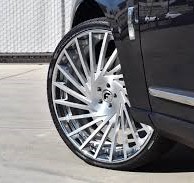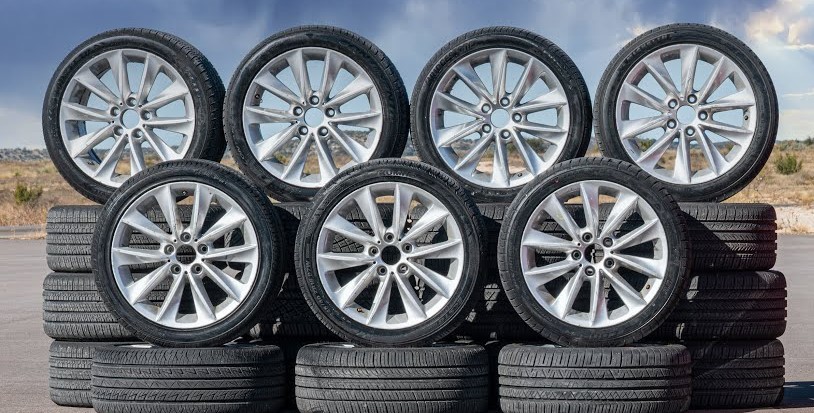
|
B
arry's Tire Tech This is a series of articles on the technical aspects of tires, their care and usage. My primary purpose in these articles is to help people understand tires and thereby reduce the risks we all face every day. ..........and since tires is just about the only thing I know about.......... Please drop me a note if you have a topic you want to see: Barry@BarrysTireTech.com |
|
Low Profile vs High Profile Tires: This article was prompted by a YouTube video on the same subject that was ........ah ........ Let's just say I thought I could do a better job. But let me start by saying, the variability within a given size is quite large - so large that tires on the extremes could be the reverse of what is indicated here. This is particularly true because this comparison is constrained by the fact that I am going to compare what is possible within a given vehicle. With that in mind, let's go!! |
|
There are 2 problems. 1st Problem: To do an apples-to-apples comparison, things have to be the same except for that one thing you are comparing. - BUT - You just can't do that. It's impossible. Let me show you. To the right is a comparison where I only change the aspect ratio. Notice that in addition to the aspect ratio changing (the thing we are interested in), the overall diameter also changed, as well as the load index (load carrying capacity). We tire engineers really focus on load, as we know that has MAJOR implications on performance. Besides, this is NOT how one would do a change of this type on a given vehicle. |
|
|
Let's try changing the width at the same time to see if we get closer. Hum, hum, hum, hum. Hum, can't seem to remember the tune, so the words are irrelevant. Hum, hum.
Well, that's better, but is it possible to get even closer? |
|
This time, let's also try using a larger wheel diameter. This is what Kia actually uses for their Soul (sort of). As you can see, there isn't going to be an absolute apples-to-apples comparison. So let's just assume we can do it using this last attempt at apples-to-apples, and discuss this on that theoretical basis.
|
|

|
2nd Problem: Typically when folks go down in profile, they also change the type of tire. - like from an All Season to a High Performance - sometimes even to an Ultra High Performance. So we need a comparison done this way as well. |
|
So I am going to do 2 cmparisons at the same time:
OK, we've got the stage set. Onto the main event!! |
|
Ride Quality: Here the height of the sidewall is the important player. The height of the filler and the turnup height - the stiffening elements - are usually expressed as a percent of the section height. This means there is more sidewall available to flex for high profile tires. As a general rule a Low Profile, W/Y speed rated, Summer UHP tire is going to be geared towards handling and have higher filler heights and higher turnup heights - and sacrifice ride quality to get it. Handling: I like to think of this as how quickly the tire responds to steering input - which results in poorer ride quality. The taller the sidewall, the worse the feel.
|
|
|
Dry Traction Here the width of the tread is the important parameter - wider is better. The UHP tire would have an even grippier tread rubber compound. Wet Traction (Not Hydroplaning): Again, tread width is the important parameter - wider is better. The UHP, even more so. Hydroplaning: Once more treadwidth - but this time wider = worse! Snow Traction: Wider tread = better. But for the UHP, the tread pattern will negatively affect the results. Ice Traction: This is mostly about tread compound - so it really affects the UHP. |
|
|
Treadwear: Here more width is normally better, but the difference is so small, I've marked it as the same - except for the UHP. Rolling Resistance: Normally more width is worse, but, again, the difference is so small that I marked it as the same - except for the UHP. Noise: This is mostly about tread pattern - and since the tread patterns are the same ....... Except that UHP's generally have a better pattern for noise - but - they make a peculiar slapping noise in certain circumstances, so I've marked this as the same. |
|
|
Flatspotting: The only reason this is here is because of the nylon in UHP tires. Ease of Manufacture: This is also one where UHP tires are the reason it is here. Cost of Manufacture: Another vote for UHP tires. Retail Cost: This is all about supply and demand. High profile tires are becoming scarcer, while low profile tires are becoming the preferred fitment by the OEM's, but Summer UHP tires are not as popular. |
|
|
|
|
Damage due to Impact: This is probably the most talked about item for low profile tires. The stiffer sidewall of the UHP helps here. Repair: Some have said that a speed rated tire loses its speed rating when it is repaired, but I haven't heard any tire manufacturer say that. Nevertheless, I think there is something there. |
|
|
|
|
|